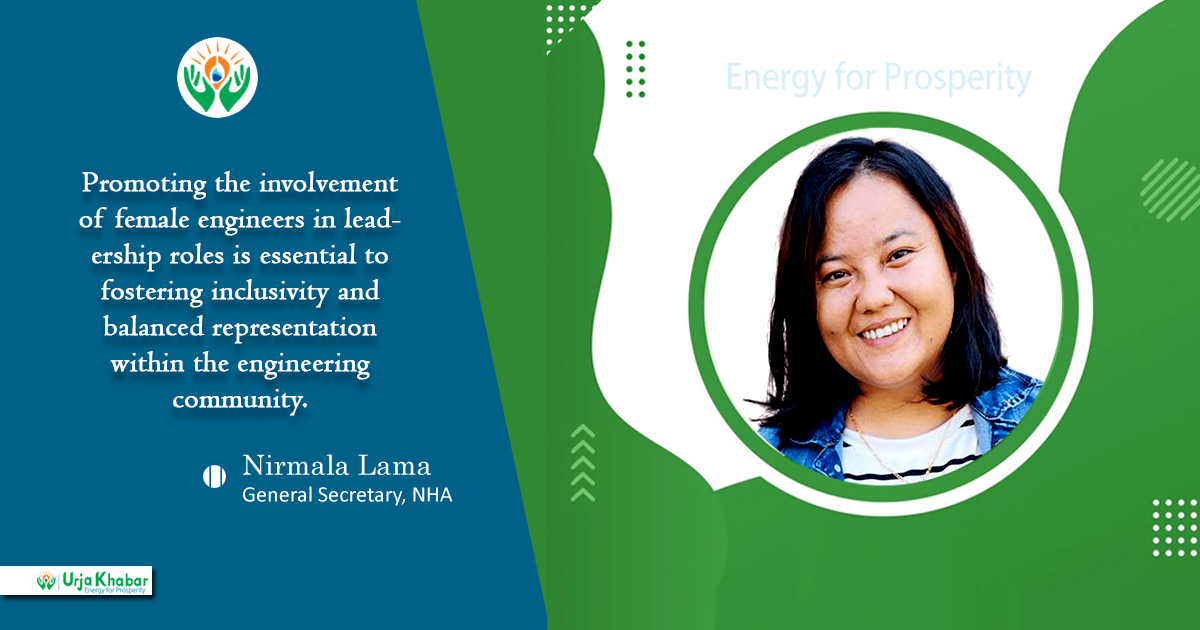
In the current context, it is estimated that there are approximately 100,000 engineers in Nepal across all fields of engineering. However, this data is not found in any precise documentation by any engineering council or association. According to data from the engineering council, women engineers make up 13% of those registered, which is an estimation of around 60,000 members. Optimistically, we can estimate that women's participation in the engineering sector is around 15%.
Overall women's participation in politics indicates an encouraging scenario. In the 2022 election of the parliament house of Nepal, a total of 225 women participated as candidates, which accounted for 9.3% of the total 2,412 candidates across all political parties. Although the overall percentage of female candidates was relatively low, the success rate among them was notably higher. Out of the total 181 elected candidates, 81 were women—making up 30.6% of the elected representatives, according to some sources. The constitutional provision that reserves one-third of seats for women has played a crucial role in empowering women in the field of Nepal’s politics and leadership roles.

Women’s Participation in NEA Elections 2024
In the year of 2024, women represented 6.5% of the total participants in Nepal Engineers' Association (NEA) election, accounting for 1,580 out of 18,600 members, according to data published during its election 2081 (2024). This figure, unfortunately, doesn’t offer an optimistic outlook for gender equality within the sector.

Among the 429 candidates in the NEA election (2081), only about 8% were female. For key leadership positions, 10% of the candidates were women, while for the general member posts, female representation drops to 6%. These percentages fall far short of Nepal’s policy for 33% female inclusion through reservation, highlighting the ongoing challenges in achieving gender equality in leadership roles within the engineering sector.
The NEA is one of the most prestigious organizations for engineers in Nepal, regardless of gender. It is crucial to encourage greater engagement of female engineers, both in terms of membership and leadership roles as this is essential toward advancing gender equality within the engineering profession. However, it is also equally important to acknowledge and address the challenges that arise in the process.
Challenges
Women not only face societal pressures to prioritize family, they also prefer to take more responsibilities by nature over professional growth. Balancing these personal responsibilities with professional growth can make it even more challenging for women to take on the demanding roles of leadership positions. On the other hand, female engineers frequently have fewer professional networks and mentors than their male counterparts. This lack of support can hamper their ability to campaign effectively or access vital resources during elections.
It is undebatable that women in leadership positions still face biases regarding their capabilities, and such bias can affect their chances in elections. Even when women do participate in elections, they are often underrepresented in the most influential positions. For instance, in the most recent NEA election, only 10% of candidates for key roles were women, far below the expected 33% female inclusion policy.
Opportunities
Women candidates can bring a fresh perspective to the leadership, advocating for policies that promote gender equality, better work-life balance, and opportunities for professional growth. Their involvement in decision-making roles will help ensure that issues faced by women in engineering are addressed more effectively. Increased female participation in elections will create role models for younger women engineers, inspiring the next generation to pursue leadership roles. This could also foster the growth of support networks and mentorship opportunities within the engineering community.
At the same time, women in leadership positions can push for reforms that prioritize diversity and inclusion, from advocating for equal pay to implementing policies that support women engineers in the workplace. Their participation can help reshape the approach to gender equity. Encouraging more women to participate in the professional institutional election fosters a more diverse leadership, which leads to better representation of all engineers in Nepal. Diversity in leadership can result in more innovative solutions, as different perspectives are considered in decision-making processes.
Conclusion
The representation of women engineers in the election is not just about numbers; it’s about reshaping the future of the female representation in engineering profession in Nepal. As more women take on leadership roles, they will bring fresh ideas, inclusive policies, and a commitment to gender equality that will benefit the entire profession. With continued support and the breakdown of existing barriers, the NEA and other engineering institutions can serve as a model for how professional bodies in Nepal can evolve to become more inclusive and reflective of the diverse talent within their industries.
With the Centre for Democratic Engineers’ Nepal (CDEN) election approaching, it is crucial for such institutions to provide equal opportunities for female engineers and actively encourage their participation. All the engineering societies of different sectors, including the NEA, have an important role to play in empowering women engineers, ensuring they are supported, motivated, and given the chance to take part in the electoral process. Promoting the involvement of female engineers in leadership roles is essential to fostering inclusivity and balanced representation within the engineering community.
The Writer is an MSc in Hydraulics and River Dynamics.

Mrs Lama is a General Secretary of Nepal Hydropower Association (NHA)